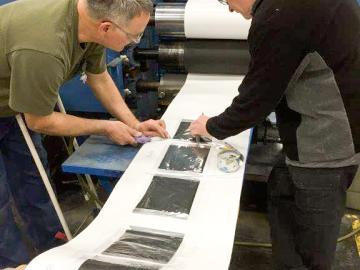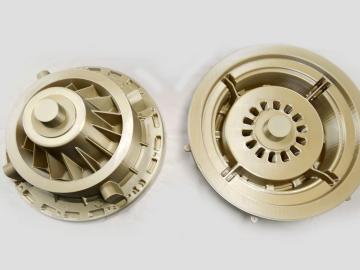Filter News
Area of Research
- (-) Advanced Manufacturing (20)
- (-) Earth Sciences (1)
- Biological Systems (3)
- Biology and Environment (134)
- Biology and Soft Matter (4)
- Building Technologies (9)
- Chemical and Engineering Materials (4)
- Chemistry and Physics at Interfaces (7)
- Clean Energy (320)
- Climate and Environmental Systems (11)
- Computational Biology (2)
- Computational Chemistry (5)
- Computational Engineering (3)
- Computer Science (13)
- Data (1)
- Electricity and Smart Grid (2)
- Energy Frontier Research Centers (7)
- Energy Sciences (2)
- Fossil Energy (1)
- Fuel Cycle Science and Technology (2)
- Functional Materials for Energy (8)
- Fusion and Fission (36)
- Fusion Energy (15)
- Geographic Information Science and Technology (1)
- Isotope Development and Production (1)
- Isotopes (26)
- Materials (197)
- Materials for Computing (23)
- Materials Synthesis from Atoms to Systems (8)
- Materials Under Extremes (7)
- Mathematics (1)
- National Security (53)
- Neutron Data Analysis and Visualization (4)
- Neutron Science (107)
- Nuclear Science and Technology (45)
- Nuclear Systems Modeling, Simulation and Validation (2)
- Quantum Condensed Matter (3)
- Quantum information Science (7)
- Renewable Energy (4)
- Sensors and Controls (4)
- Supercomputing (194)
- Transportation Systems (6)
News Type
Media Contacts

A team including Oak Ridge National Laboratory and University of Tennessee researchers demonstrated a novel 3D printing approach called Z-pinning that can increase the material’s strength and toughness by more than three and a half times compared to conventional additive manufacturing processes.

Using additive manufacturing, scientists experimenting with tungsten at Oak Ridge National Laboratory hope to unlock new potential of the high-performance heat-transferring material used to protect components from the plasma inside a fusion reactor. Fusion requires hydrogen isotopes to reach millions of degrees.

A novel additive manufacturing method developed by researchers at Oak Ridge National Laboratory could be a promising alternative for low-cost, high-quality production of large-scale metal parts with less material waste.

The construction industry may soon benefit from 3D printed molds to make concrete facades, promising lower cost and production time. Researchers at Oak Ridge National Laboratory are evaluating the performance of 3D printed molds used to precast concrete facades in a 42-story buildin...

While serving in Kandahar, Afghanistan, U.S. Navy construction mechanic Matthew Sallas may not have imagined where his experience would take him next. But researchers at Oak Ridge National Laboratory certainly had the future in mind as they were creating programs to train men and wome...

Scientists at Oak Ridge National Laboratory are using the precision of an electron beam to instantly adhere cathode coatings for lithium-ion batteries—a leap in efficiency that saves energy, reduces production and capital costs, and eliminates the use of toxic solvents.

Oak Ridge National Laboratory has successfully developed and tested a novel sand casting technique to quickly design complex patterns to fabricate components for industry partner Emrgy Hydro, makers of hydropower devices designed to generate electricity from slow or shallow water flo...







